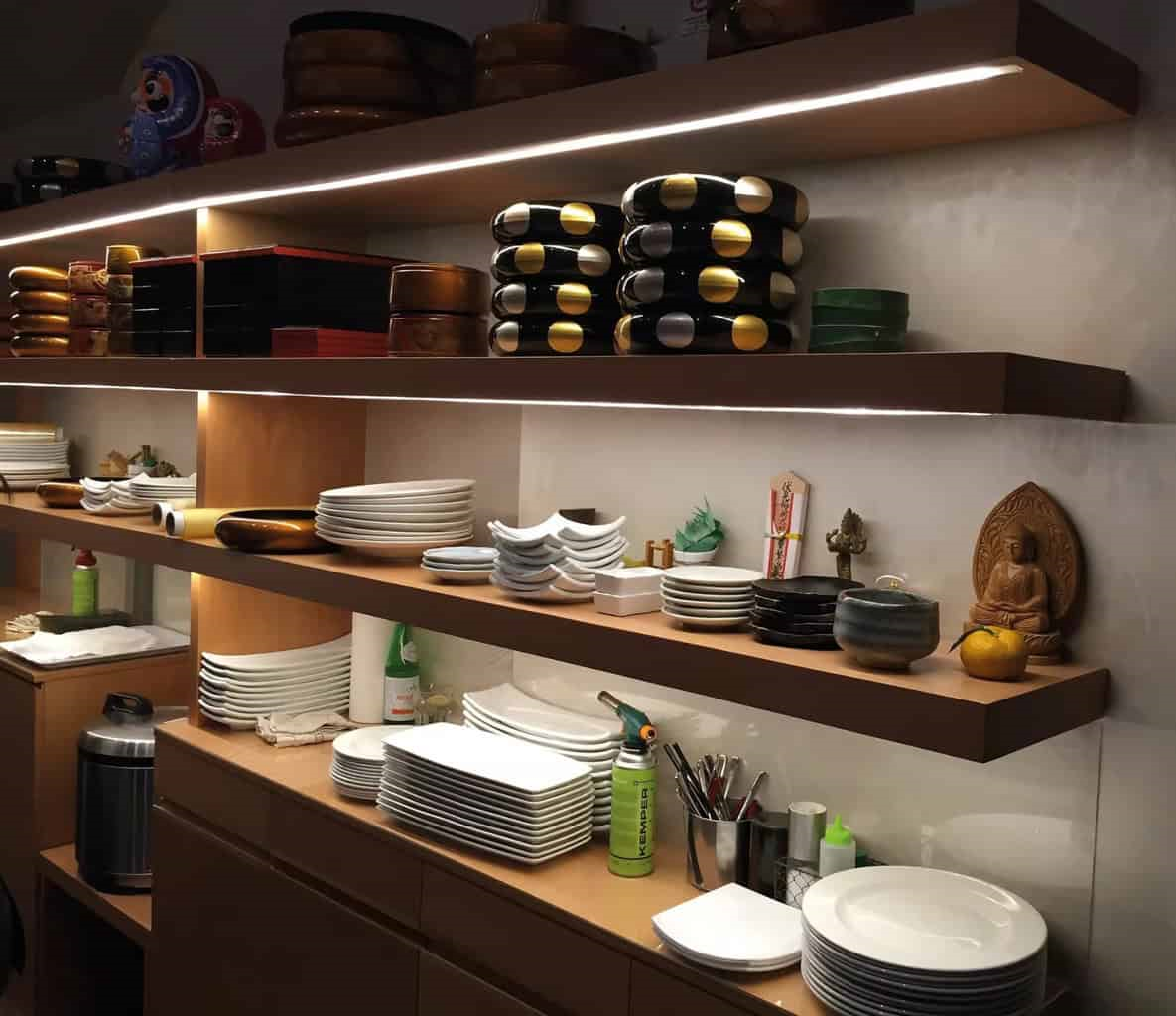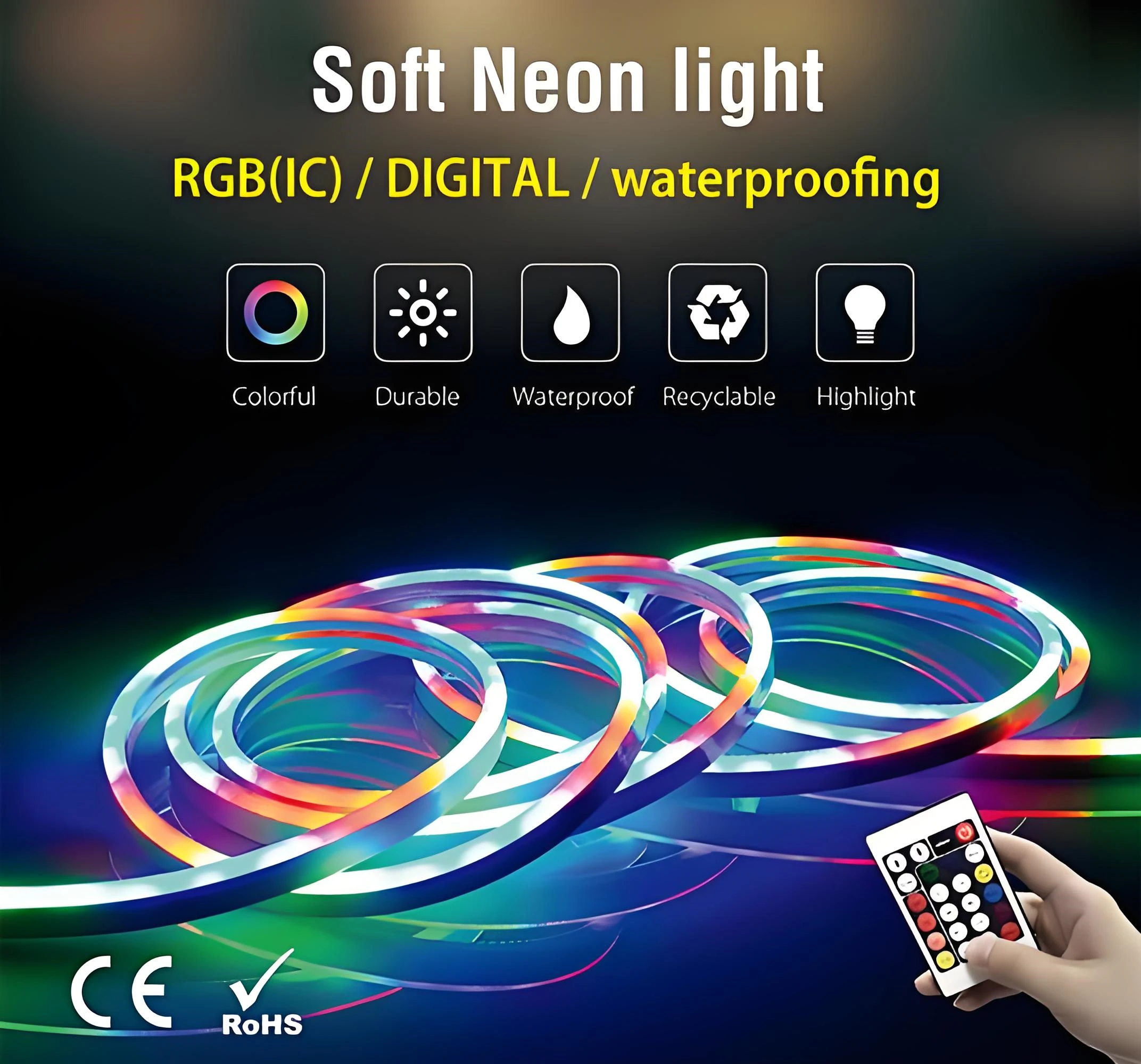When designing and arranging lighting, understanding key units like lumens, lux, footcandles, and watts is essential. These measurements determine how bright a space will feel, affecting both functionality and ambiance. Lumens indicate the total light output, while lux and footcandles measure how that light is distributed over an area. Meanwhile, watts represent energy consumption rather than brightness, making it crucial to choose energy-efficient lighting. Whether lighting a home, office, or commercial space, selecting the right brightness ensures comfort, productivity, and visual appeal. Misunderstanding these units can lead to spaces that are either too dim or overly harsh. By grasping these concepts, homeowners, designers, and business owners can make informed lighting choices that enhance both aesthetics and efficiency. This article explores these fundamental lighting terms and provides practical guidance on determining the right lumen levels for any space.
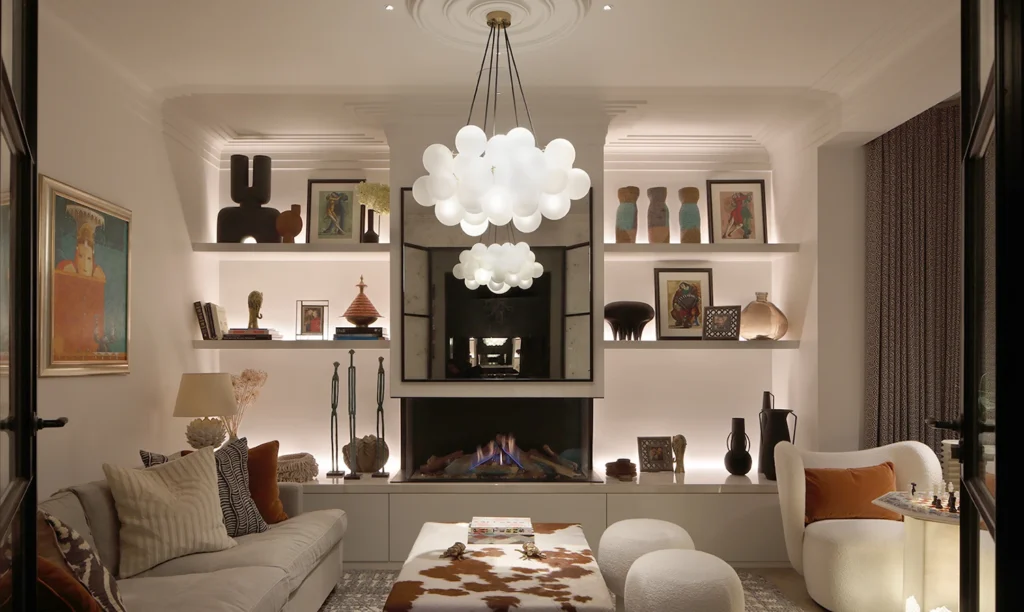
What Are Lumens in Lighting
Lumens (lm) are the international standard unit of luminous flux, measuring the total visible light emitted by a source. Unlike watts, which represent energy consumption, lumens directly indicate brightness, making them a crucial factor in lighting selection. A higher lumen value means a brighter light, while a lower one produces a softer glow. Since lumens quantify the actual light output, they provide a more accurate way to compare different light sources, ensuring optimal illumination for any space. Understanding lumens allows for better lighting design, balancing brightness, comfort, and energy efficiency.
What Are Footcandles in Lighting
Footcandles (fc) are the standard unit of illuminance used in North America, measuring the amount of light that falls on a surface. One footcandle is defined as the illuminance produced by one lumen per square foot. Unlike lumens, which quantify the total light output of a source, footcandles indicate how much of that light actually reaches a given area, making them essential for evaluating the effectiveness of lighting in a space. In lighting design, footcandles help determine the appropriate brightness for different environments, ensuring sufficient illumination for tasks, ambiance, and safety. By considering footcandle levels, designers can create well-balanced lighting that meets functional needs while maintaining visual comfort.
What Are Lux in Lighting
Lux is the international unit of illuminance, measuring the amount of light that falls on a surface per unit area. It is defined as one lumen per square meter, making it a key parameter in evaluating lighting conditions. In various settings—from workspaces to public areas—lux helps ensure that lighting levels are adequate for both visual comfort and task performance. This standard measurement enables lighting designers and engineers to compare different lighting solutions effectively, optimize energy usage, and maintain compliance with international safety standards in both practical applications and photometric research.
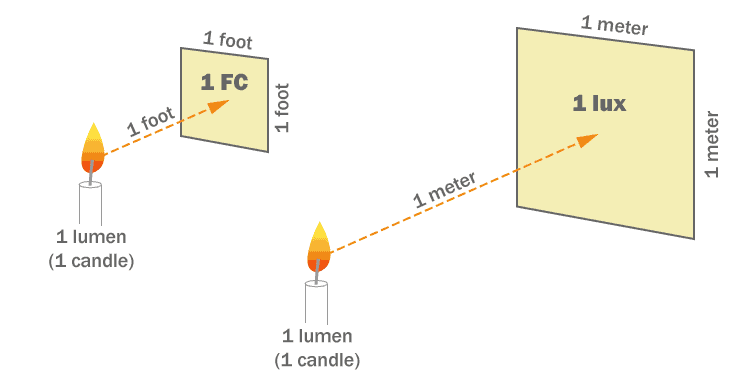
What Are Watts in Lighting
Watts (W) in lighting refer to the unit of power consumption, indicating how much electrical energy a light source uses. Unlike lumens, which measure brightness, watts do not directly determine light output. Traditional incandescent bulbs had a direct correlation between wattage and brightness, but with energy-efficient technologies like LEDs, lower wattage can produce the same or even higher brightness. Understanding wattage helps consumers compare energy efficiency and operating costs. Choosing lower-wattage, high-lumen LEDs reduces electricity consumption while maintaining sufficient illumination, making them a sustainable and cost-effective lighting solution.
How Do lumens, Footcandles, Lux and Watts relate
In lighting, different units are used to measure brightness, illuminance, and power consumption. Understanding how lumens, footcandles, lux, and watts relate to each other helps in designing efficient lighting systems.
Lumens & Footcandles
Footcandles measure illuminance in the imperial system, while lumens represent total light output. One footcandle equals one lumen per square foot, meaning the same number of lumens will create higher or lower footcandle values depending on the area they are spread over.
Lumens & Lux
Lux is similar to footcandles but follows the metric system. One lux equals one lumen per square meter. Since a square meter is larger than a square foot, 1 footcandle equals approximately 10.76 lux.
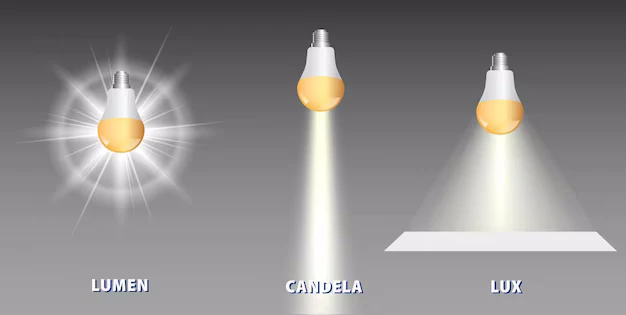
Lumens & Watts
Watts measure power consumption, not brightness, but there is often an efficiency relationship. Traditional incandescent bulbs required high wattage for bright output, while modern LEDs achieve the same lumens with significantly lower watts, improving energy efficiency.
Footcandles & Lux
Footcandles and lux measure the same concept—illuminance—but in different units. The conversion is straightforward: 1 footcandle equals 10.76 lux, making lux a more precise unit for scientific and engineering applications.
Lux & Watts
Lux describes illuminance, while watts indicate energy use. A high lux level with low wattage signifies an efficient light source, such as LEDs. In contrast, inefficient lighting consumes more watts to achieve the same lux, leading to higher energy costs.
How Lumens Affect Lighting
Luminous efficacy is a key factor in assessing lighting efficiency, helping compare different technologies. Traditional incandescent bulbs offer around 14 lumens per watt, whereas modern LEDs achieve 70-110 lumens per watt, significantly improving energy savings.
Lumens determine brightness levels, influencing lighting choices based on room size and function. Task lighting in kitchens or workspaces requires higher lumens, while ambient lighting in living rooms needs less. The table below illustrates the efficiency of various light sources, including LED lighing, fluorescent, halogen and incandescent, as well as their power consumption when reach to 1000 lumen output.
| Light Source | Luminous Efficacy (lm/W) | Power Required for 1000 Lumens (W) |
| LED | 80-150lm/W | 7-12W |
| CFL | 50-70lm/W | 14-20W |
| Halogen | 15-25lm/W | 40-70W |
| Incandescent | 10-17lm/W | 60-100W |
How Many Lumens Do I Need For My Space
Determining how many lumens you need for your space starts with understanding the recommended illuminance—or lux—levels for different environments. Below is a chart that lists suggested lux values for a variety of settings:
| Space | Recommended footcandles Level | Recommended Lux Level |
| Office (task lighting) | 40-50 FC | 400-500 lux |
| Kitchen countertops | 30–50 FC | 300–500 lux |
| Living room | 10–30 FC | 100–300 lux |
| Bedroom | 10–20 FC | 100–200 lux |
| Bathroom | 20–40 FC | 200–400 lux |
| Hallway | 10–20 FC | 100–200 lux |
| Retail store | 30–50 FC | 300–500 lux |
| Workshop | 50–100 FC | 500–1000 lux |
| Hospital ward | 30–50 FC | 300–500 lux |
| Classroom | 30–50 FC | 300–500 lux |
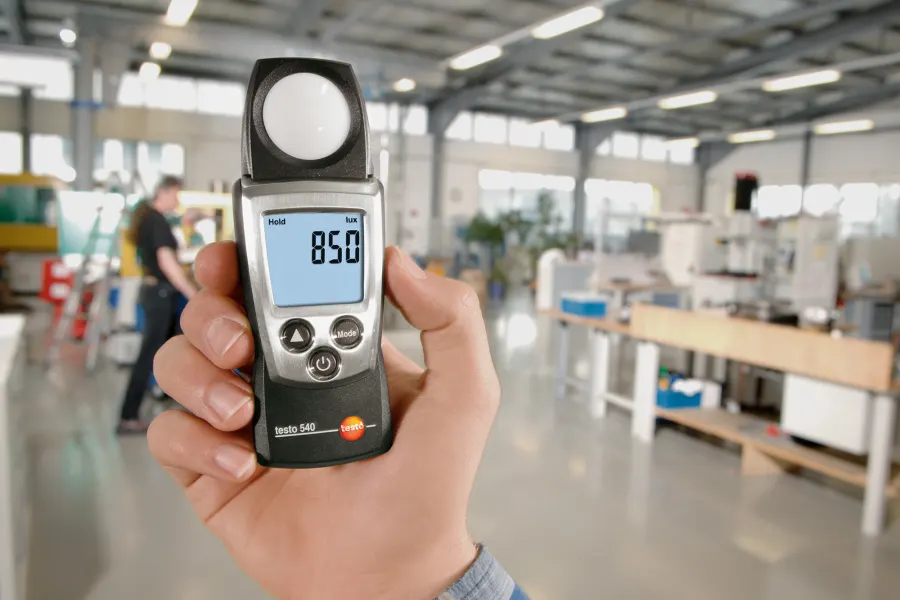
To calculate the total lumens required, follow these steps:
Determine the Area: Measure the length and width of your space in square meters (or convert from feet to meters).
Select the Recommended Lux Level: Choose the appropriate lux level from the chart based on your space’s function.
Calculate Total Lumens: Multiply the area (in m²) by the selected lux value. For example, a 20 m² office with a recommended level of 500 lux requires 20 m² × 500 lux = 10,000 lumens in total.
When it comes to choosing fixtures, consider both efficiency and design. Take LED strip lights as an example: these fixtures typically provide high luminous efficacy, meaning they deliver more lumens per watt compared to traditional bulbs. Start by checking the product specifications to see the lumens output per meter of the LED strip. Then, calculate how many meters you need by dividing the total required lumens by the lumens output per meter. Also, factor in the layout and spacing of the strips to ensure uniform coverage without dark spots.

Other factors can also influence your lumen estimation:
Wall and Ceiling Colors: Light-colored surfaces reflect more light, potentially reducing the overall lumen requirement, while dark colors absorb light, necessitating a higher lumen output.
Furniture Placement: Large or bulky furniture can obstruct light paths. Ensure that lumens are not overly concentrated in one area while leaving shadows in another.
Fixture Placement and Distribution: The positioning and angle of your lighting fixtures determine how evenly the light is distributed across the room. Strategically placing fixtures and using diffusers or reflectors can improve light distribution.
Ambient Lighting and Natural Light: Consider any existing ambient light, including daylight. Supplemental artificial lighting might be reduced if natural light is abundant during certain hours.
Task-Specific Requirements: Some areas may require higher brightness for tasks that demand more visual acuity, such as detailed workspaces or reading areas, while other areas might need softer lighting for relaxation.
By considering these factors and carefully calculating the required lumens based on your space’s area and usage, you can choose the right LED fixtures or other lighting options to achieve the desired brightness, energy efficiency, and aesthetic appeal.

FAQ
WhWhat is the difference between lumens and lux?
Lumens measure the total light output, while lux measures light intensity per square meter.
How do footcandles compare to lux?
One footcandle equals 10.76 lux, both measuring illuminance but in different units.
What is luminous efficacy, and why is it important?
It’s the ratio of lumens produced to power consumed (lm/W), indicating energy efficiency.
How do I calculate the required lumens for a room?
Multiply the room’s square footage by the recommended lux level for its purpose.
How does LED lighting compare to other light sources in terms of efficacy?
LEDs are significantly more efficient, often producing 80-150 lm/W, compared to incandescent bulbs (~14 lm/W).
What factors affect light efficacy?
LED chip quality, driver efficiency, thermal management, and optical losses impact efficacy.
Why do two light sourcesWhy do two light sources with the same lumens appear different in brightness?
Beam angle and distribution affect how light spreads, influencing perceived brightness.
How does color temperature impact lighting efficiency?
Cooler white LEDs (5000K+) tend to have slightly higher efficacy than warm white LEDs (2700K-3000K).
What is the best way to convert lumens to watts?
Divide lumens by the light source’s efficacy (lm/W) to estimate wattage.
How do I measure footcandles in a space?
Use a light meter to measure illuminance at a specific location in footcandles or lux.
Looking for high-quality LED lighting solutions? Signlite, with over 15 years of expertise, specializes in LED strip lights, sign tubes, LED neon lights, and tri-proof lights. We provide reliable, energy-efficient products tailored to your needs. Contact us today to explore our innovative lighting solutions and elevate your projects! Get a quote now!


